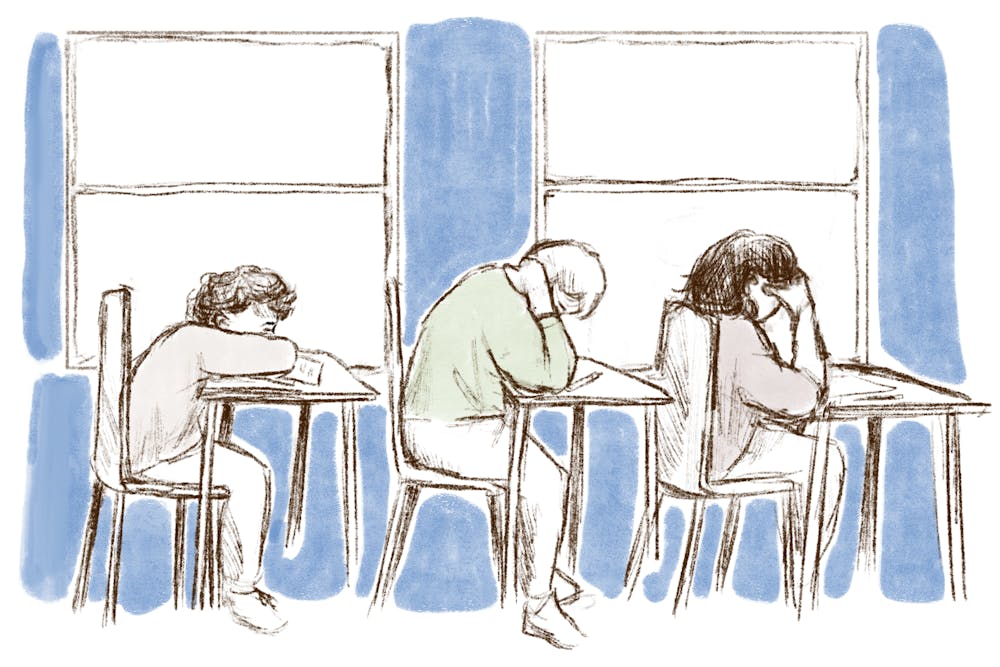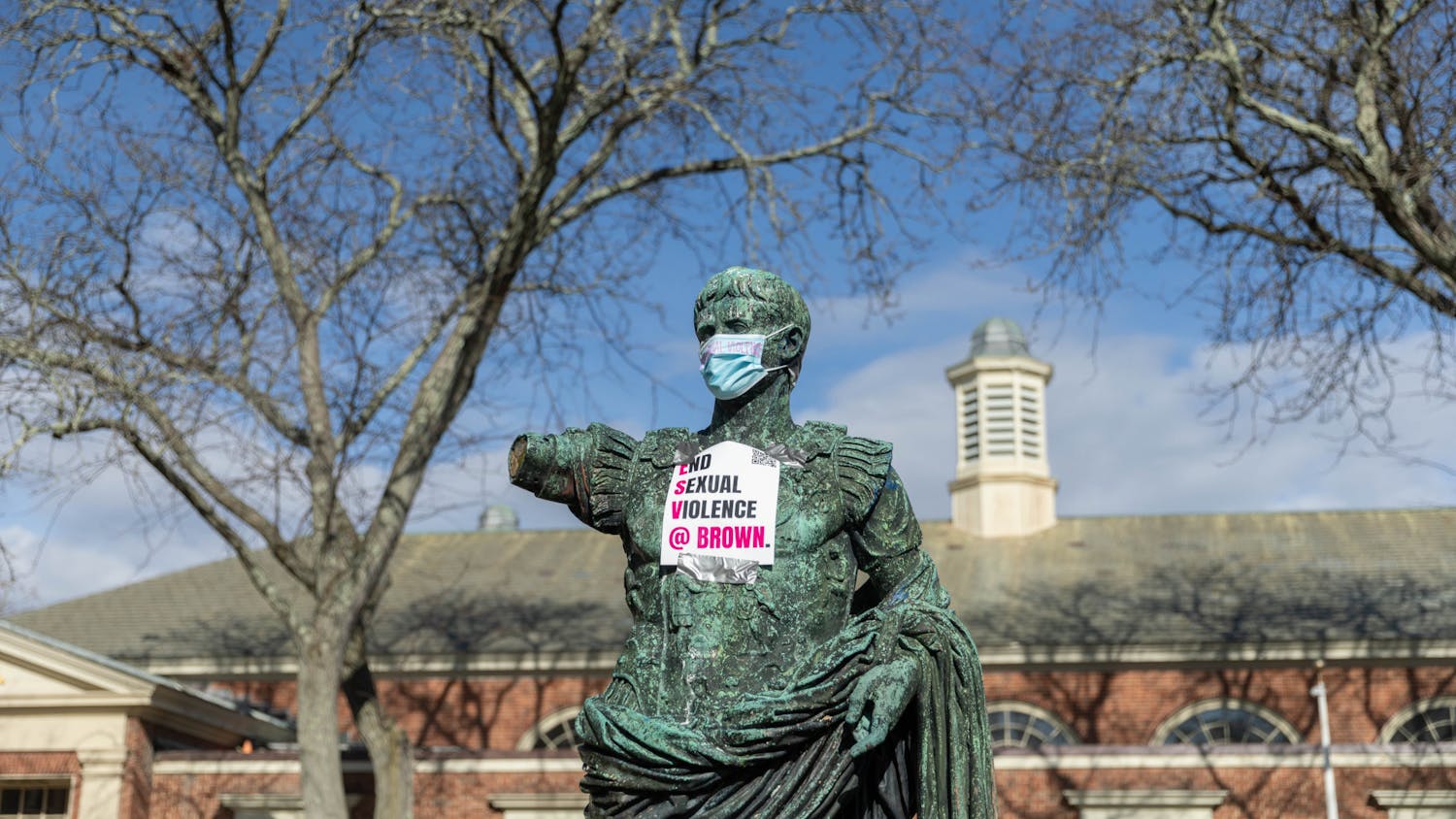Rhode Island’s public education system, including Providence Public Schools, is “in crisis,” according to a report published Oct. 13.
The report, released by the Rhode Island Public Expenditure Council, a local policy nonprofit, discusses issues facing Rhode Island public schools that have worsened during the COVID-19 pandemic and proposes reforms that could be enacted to address these problems.
“We have large numbers of students who cannot show proficiency in (English Language Arts), and even larger numbers of students who cannot show proficiency in math,” said Justine Oliva, RIPEC’s research manager.
According to the report, only one in three students from 3rd to 8th grade could demonstrate proficiency on the ELA portion of the Rhode Island Comprehensive Assessment System, a statewide standardized test. Only one in five could demonstrate proficiency in mathematics. The report states that proficiency rates are likely even lower than this due to declines in participation among historically disadvantaged subgroups, such as racial minorities, special education students and economically disadvantaged students.
“This is especially troubling because it’s a basic equity issue,” Oliva added. “We have a shifting demographic composition in Rhode Island, so the disparity between racial and ethnic subgroups is something we should take note of, because we have a student population that is significantly less white and more diverse than it was 20 years ago.”
Oliva added that there is also a “marked” increase in enrollment of students with limited English proficiency, which exacerbates the equity issue.
Nicholas Domings, spokesperson for the Providence Public School District, wrote in an email to The Herald that PPSD has attempted to bridge this gap by creating “new options for families through inclusive efforts to redesign our highest-needs schools,” highlighting that Gilbert Stuart Middle School recently became Providence’s first dual-language middle school.
Domings also noted that PPSD has “made sure our students are supported with the addition of school guidance counselors at every elementary school and new community specialists at every secondary school.”
According to the assessment, Rhode Island posted the nation’s third-highest proficiency gap between white students and Hispanic students on the 2019 National Assessment for Education Progress. The gap between the graduation rate of special education students, economically disadvantaged students and Hispanic students when compared to their counterparts without those identities were all greater than the gap in most states.
To address the achievement gaps, PPSD has added “math and literacy coaches at all middle and high schools,” according to Domings.
Historically disadvantaged subgroups are “concentrated” in the state’s urban core, such as Providence, Oliva said.
Domings wrote that PPSD has “selected and implemented unified, culturally relevant, gold standard core K-12 curricula to replace a mix of existing curriculum and to match standards and provide continuity.”
Oliva also discussed the problem of chronic absenteeism in R.I. schools. In the 2020-21 school year, over a quarter of all students were chronically absent, meaning that they missed 10% or more of all school days, according to the report.
This problem has been present “in much higher numbers in some districts,” Oliva said. “It’s higher than 50% in Providence, which is by far the state’s largest school district.” Between 17% and 18% of all students in the state attend a school in PPSD, she added.
She also said the ongoing teacher shortage continues to be an issue for the state.
Domings emphasized that teacher shortages are “a nationwide issue. People in education are resigning at a much higher rate than other sectors.”
RIPEC’s report makes some proposals to address these issues.
First, the report recommends that education reform should be treated as a priority and a crisis. Secondly, it says that the school funding formula should be modified to increase education funding and target more funding toward disadvantaged communities. It also suggests flexibility between school district policies to account for the different needs of districts.
“The state’s funding formula already provides larger amounts of funding to communities that have larger numbers of economically disadvantaged students,” Oliva said. “Despite this, it doesn’t quite go far enough in leveling the playing field between districts.”
The report recommends that policymakers reform governance of Rhode Island schools to clarify responsibilities and increase accountability.
She added that in Rhode Island, a fragmented organizational structure has made it difficult for authorities to be held accountable.
Finally, for teachers, the report recommends more time in teacher development, more efforts to recruit, retain and support new teachers and more resources directed toward allowing teachers to pursue an English Language Learner certification to teach English as a second language to students.
“We think the limited English proficient students should be factored into the funding formula,” Oliva said. “They frankly cost more to educate because they have greater levels of need.”
While creating the report and recommendations, RIPEC conducted stakeholder outreach to different organizations in the education policy field, Oliva said, noting that all of the recommendations came solely from RIPEC.
“When crafting these recommendations, we thought of what would be best for the students in the state, but also with what is feasible to do,” Oliva said. “If we have the will, we can make it happen. They are not particularly insurmountable.”
“The first and most important thing,” she said, “is that education reform is made a top priority in the state.”





